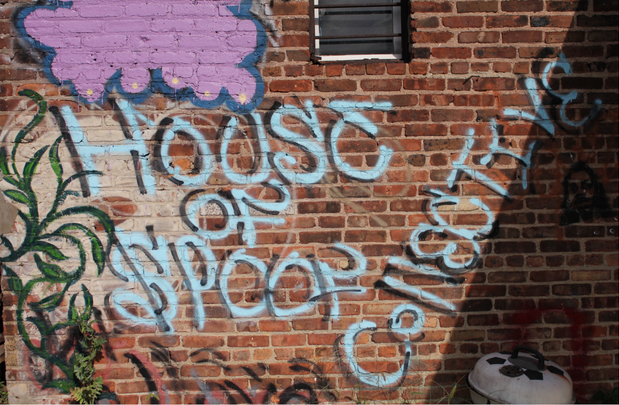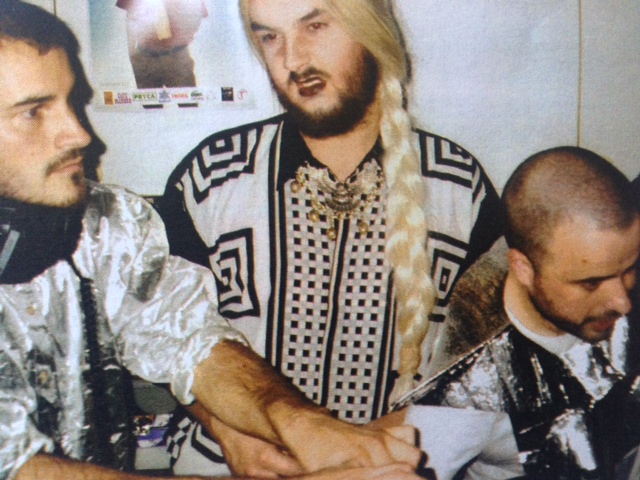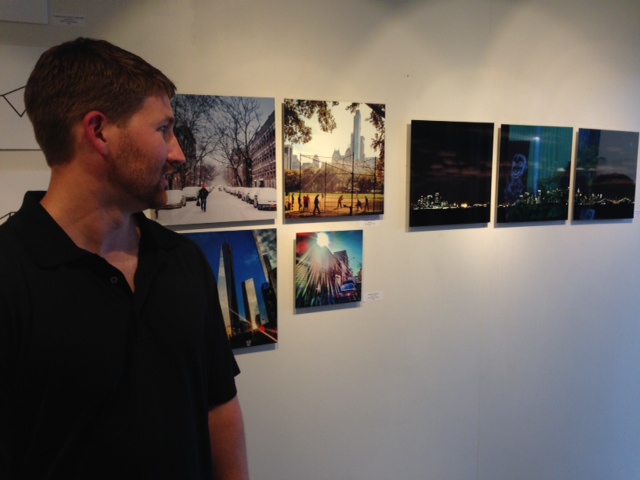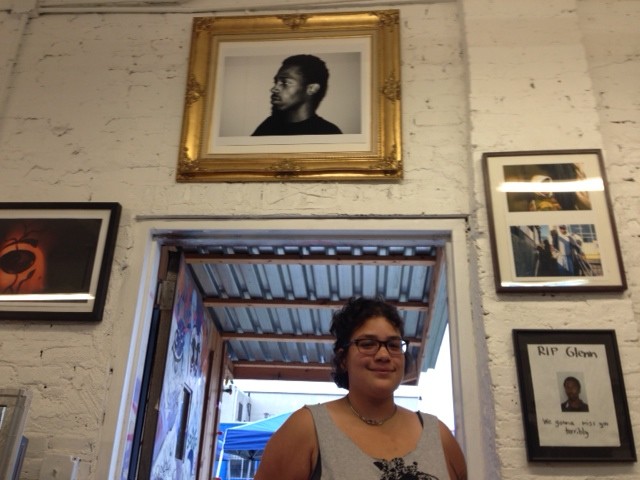Alexandra Maruri was working in a hotel in midtown Manhattan in 2010 when she had an epiphany.
“People were asking for suggestions where they could go to visit other than midtown and the regular touristy spots, and I would suggest the Bronx, and they would cringe,” she recalled.
The Bronx native said that she always knew her home borough had a “bad image” on a local or national level, but it had never occurred to her that the negative reputation had spread to a “world-wide scale.”
So Maruri would hand-sketch maps of some of her favorite places in the Bronx that were off the beaten track to supply to these tourists. After being outright ignored or told no, one traveler in particular, Maruri said, made her realize that she needed to shift her career and life’s calling.
“A lady from Spain said to me, ‘If I could go with you, then it would be perfect, I would go.’ And that was when I got the idea to do the tours.”
These days, Maruri spends her time as a licensed tour guide for MCNY Tours, the company she founded in 2011, through which she takes sightseers to historical and cultural locales throughout New York City’s oft-forgotten borough. A new themed tour in her portfolio highlights one of the Bronx’s most attractive features: street art.
“There was hidden talent,” she said of the bountiful number of professional street artists that the Bronx breeds.
Street art is steadily increasing as a formidable magnet to attract visitors to the Bronx. People like Maruri are taking advantage of the international interest in street art and its strong roots as a Bronx art form, and hoping that this suppresses what Maruri called the “world-wide problem” of a negative image that the borough still struggles with.
Maruri partnered with the TAG Public Arts Project – a local initiative that “enhances the visual landscape of urban communities with art,” as the organization’s website states.
TAG was founded by J. “SinXero” Beltran to help local businesses commission street artists to create visually exciting murals on their walls. So far TAG artists have covered 100,000 square feet of wall space in the Bronx.
The Bronx Tourism Council also works closely with Maruri, as well as with a number of other tour companies in the borough, to bring more visitors to the Bronx. According to Dena Libner, the Director of Communications & External Affairs at New York City & Company, the city’s official destination marketing organization, 55.8 million visitors are expected to come to New York City this year. According to data provided by New York Pass, an attraction “smart card” that tourists can purchase to give them access to a wide variety of city sights, the number of Bronx visits has jumped from 5,000 in 2012 to an expected 25,000 this year. But while numbers are steadily increasing, the borough is still lagging behind the city as a whole.
While Maruri and SinXero depend predominantly upon social media sites like Instagram to spread awareness about the tours or the artists behind the murals they show, their work is also promoted by the Bronx Tourism Council, which sends out a weekly newsletter to 20,000 people and has a website potential tourists access frequently, according to Olga Tirado, the council’s director. “We get a lot of hits from international folks who want to know what’s going on in the Bronx,” she said.
Tirado is able to target the potential tourists before they even make their way to American soil.
“Graff art is a big part of the Bronx legacy,” she said, explaining how the genre captures the interest of a possible sightseer. “One of the things we all know in the tourism business is that people go to different places for different reasons. There are many reasons why tourists want to make their way to New York in general and then to the Bronx, and art, and within that, street art, is one of them.”
Street art has had a lengthy history in the borough, spanning over the past several decades. Many street artists in the borough argue that graffiti and street art were born in the Bronx, like hip hop or doo-wop, before spreading in popularity across the country and the globe. The era began with “bombings” or tagging on subway trains, before the city instituted The Clean Train Movement in 1985, with trains that had been “bombed” or graffiti-covered all taken out of the New York City subway system by 1989. So graffiti artists were forced to turn to rooftops and buildings as their new canvases.
Ever since the 1980s, new locales have regularly popped up as popular street art sites. Since 2007, Tuff City, a Fordham tattoo shop and gallery has been a sanctuary for graffiti artists. The building is enveloped in lettering and murals, but the pièce de résistance is the 45-foot subway car behind the building, which is home to ginormous lettering and characters.
According to locals, a favorite for the past few years has been the TATS Cru “I Love The Bronx” mural on Simpson Street and Westchester Avenue. The large mural, which takes up the entire side of a discount store, was made in 2012, and has been a neighborhood attraction since then. Playing on the famous “I Love New York” slogan, the painting features a fiery heart in front of larger-than-life block-letters that spell out “BRONX” and are filled with hyper-realistic scenes familiar to those in the borough, from a subway train and children playing in the streets, or a hot dog vendor and DJ spinning tracks, to the more touristy Yankee Stadium and Bronx Zoo.

TATS Cru “I Love The Bronx” mural on Simpson Street is a favorite amongst locals (Stephanie Beach / THE BRONX INK)
John “Crash” Matos, a graffiti artist who has been working in the Bronx since 1974, when he was 13, opened WallWorks NY, an art gallery that he will run with his 24-year-old daughter, Anna. The entire side of the building, on the corner of Bruckner Boulevard and Alexander Avenue, showcases a stunningly realistic mural of a woman and her dog, painted by TATS Cru, that will be up until the end of the year, before being painted over with a new piece.

Famous Bronx street artists TATS Cru painted a mural on the side of WallWorksNY gallery on Alexander Avenue (Stephanie Beach / THE BRONX INK)
Matos said that the Bronx has given him so much and he is excited to give back to the art world in the borough.
In addition to attracting international visitors and beautifying the neighborhoods for locals, street art tours also act as an open-air, public, free art gallery for talented artists in the borough.
“This is actual art and hopefully these gentlemen that are involved can go to the next level and get noticed on a world-wide scale,” Maruri said.
One such artist gaining momentum in the Bronx street art scene is Connecticut native John O’Grodnick.
O’Grodnick started painting as a young boy, saying that he always had a lot of “creativity running in my brain” and had to find a means by which to “let it out.”
Now he lives in the Bronx – and he opted to move to the northernmost borough instead of one of the other four.
“Every borough has its own soul,” he explained. “And the Bronx has a vibe of realness that you can’t find anywhere else. It is the most untouched, untapped borough in New York City. It reminds me of Old New York before billionaires took over and pushed all real New Yorkers out of their homes.”
After meeting SinXero at an art opening, O’Grodnick decided to try his hand at using a wall as his medium in place of a canvas, and now visitors taking a street art tour are exposed to his work – which he describes as “beautiful, dirty industrial street art” – without having to set foot inside a gallery.
O’Grodnick’s murals imitate the general look and feel of his gallery pieces. His murals feature bright neon and primary colors and have a modern urbanite Picasso-meets-Warhol feel to them. One such mural at 2100 Glebe Ave. in the Parkchester neighborhood features brightly colored mouths and noses staggered on top of each other, with one particularly large pill-shaped mouth covering the entire door of the building. Another, done across a metal gate on 370 E. 134th St. in Mott Haven, consists of swipes and splatters of bright pastel lavender, blue, green, and yellow; a neighboring gate sports a painting of a turquoise, pink, and orange cartoonish robot with “The Boogie Down Bronx” imprinted on its stomach. The artwork is bright, unique, and attention grabbing, and provides a stark contrast to the concrete and steel urban landscape that it is surrounded by.
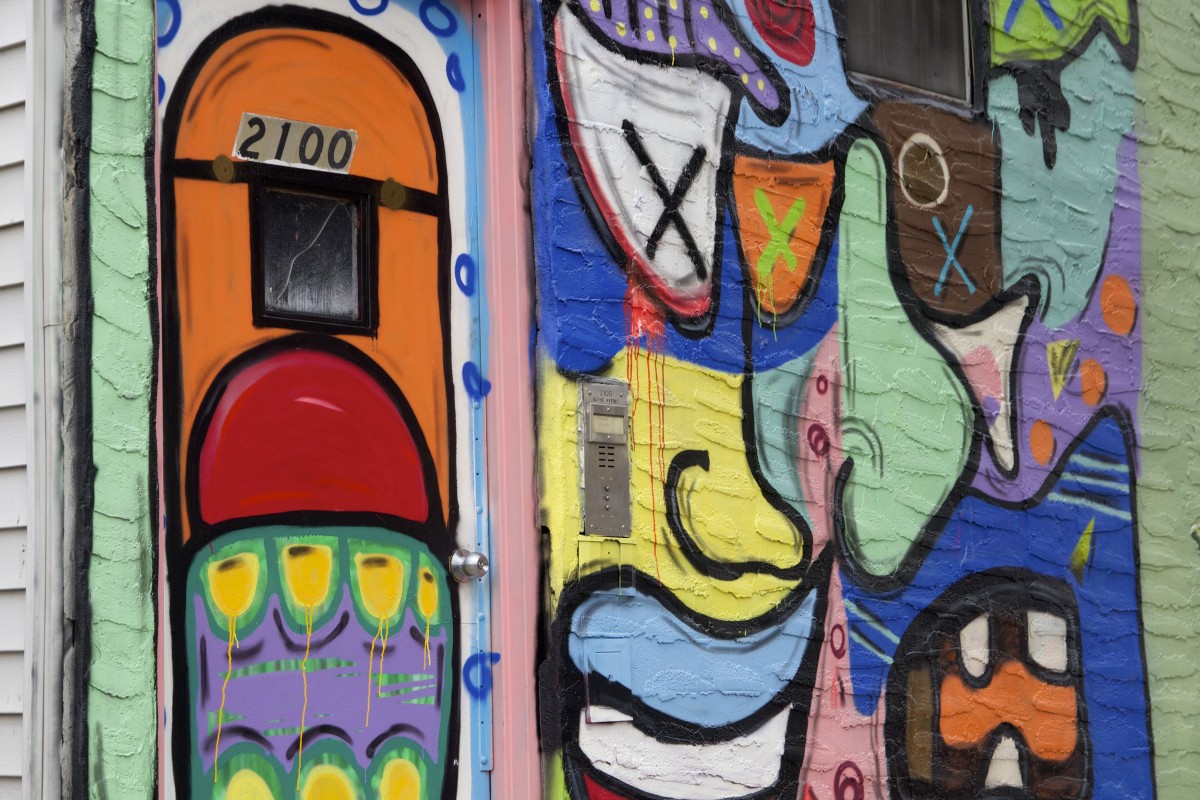
John O’Grodnick’s colorful mural on Glebe Avenue (Stephanie Beach / THE BRONX INK)
One point that these artists insist upon, no matter what medium they use, is that street art is not vandalism.
“There is a difference between tagging or graffiti on walls and having a professional artist come in and paint a piece of art on your wall,” O’Grodnick said. He recognizes that some people may not be fans of street art, and may instead prefer for “all buildings to look the same,” but he stresses the creative importance of businesses allowing commissioned artwork on their buildings.
“It is great to walk down the street and see somebody’s passion on the wall,” O’Grodnick said.
Maruri attributed the mentality that street art equals vandalism to public ignorance, and pointed out that changing this misperception is another goal that she is attempting to reach with her art tours.
“We want to discourage graffiti and discourage vandalism from a perspective of creating some real art,” she said. “People don’t know the difference and that is what this tour is about. This is not illegal. The owners want it there. It is not done behind anyone’s back. It is not done in the middle of the night.”
But numerous longstanding street artists from the Bronx fear that commissioned work is leading to the gentrification of the borough – which they are not too happy about. They contend that the Bronx’s image – the one that Maruri and Tirado and so many others are trying to change, is based upon the borough’s grittiness. And that grittiness is due, at least in part, to graffiti and tagging and the frequency with which it is visible around the borough’s streets. So to take that away would be akin to whitewashing the unique vibe and feel of the borough in favor of creating a more family-friendly, touristic environment – not entirely unlike what happened to Times Square in the 1990s.
Even in the street art world, that is a highly controversial topic of debate.
“They have no idea what they are talking about,” Matos said of people who stand behind the anti-gentrification viewpoint. “There is still an amazing amount of resistance to what we are doing and what we are about. We are basically self-taught kids who took industrial materials and made it work, not caring what people said. People like that need to get with the program, get a laptop, get into the Internet, and see what is happening beyond their front door. So there goes that argument of gentrification.”
Maruri also refuted claims that tours like hers are the wedge of gentrification, saying that people from all over the world can easily relate to street art, and that is why it is important to focus on it as a form of tourism. She cites other cities across the globe known for their admiration and dedication to street art, including London, Sydney, Rio de Janeiro, and Philadelphia.
Tirado agreed that the ease of accessibility that street art offers is an aspect that makes it ideal to be used as a tourism boost.
“Street art is public art, and we are big supporters of public art. We need to make space for art on our streets,” Tirado said. “It raises the community perception, it also raises the community’s pride in their community when you see art, when you see beautiful art in your neighborhood.”
Maruri said that she and SinXero work together so well because they both share the same interests at heart.
“Since we’re insiders, we’re not outsiders, we really want to see our communities improve, and that’s the common goal that we have. We want to uplift our communities,” she said.
Through the use of street art to attract tourism, tour companies, the Tourism Council, and the street artists themselves hope to ignite a cultural shift.
“You’re working against an image from the past, so it is not like something that happens overnight,” Maruri said. “But people can now see that we’re a community that is booming and not burning.”



